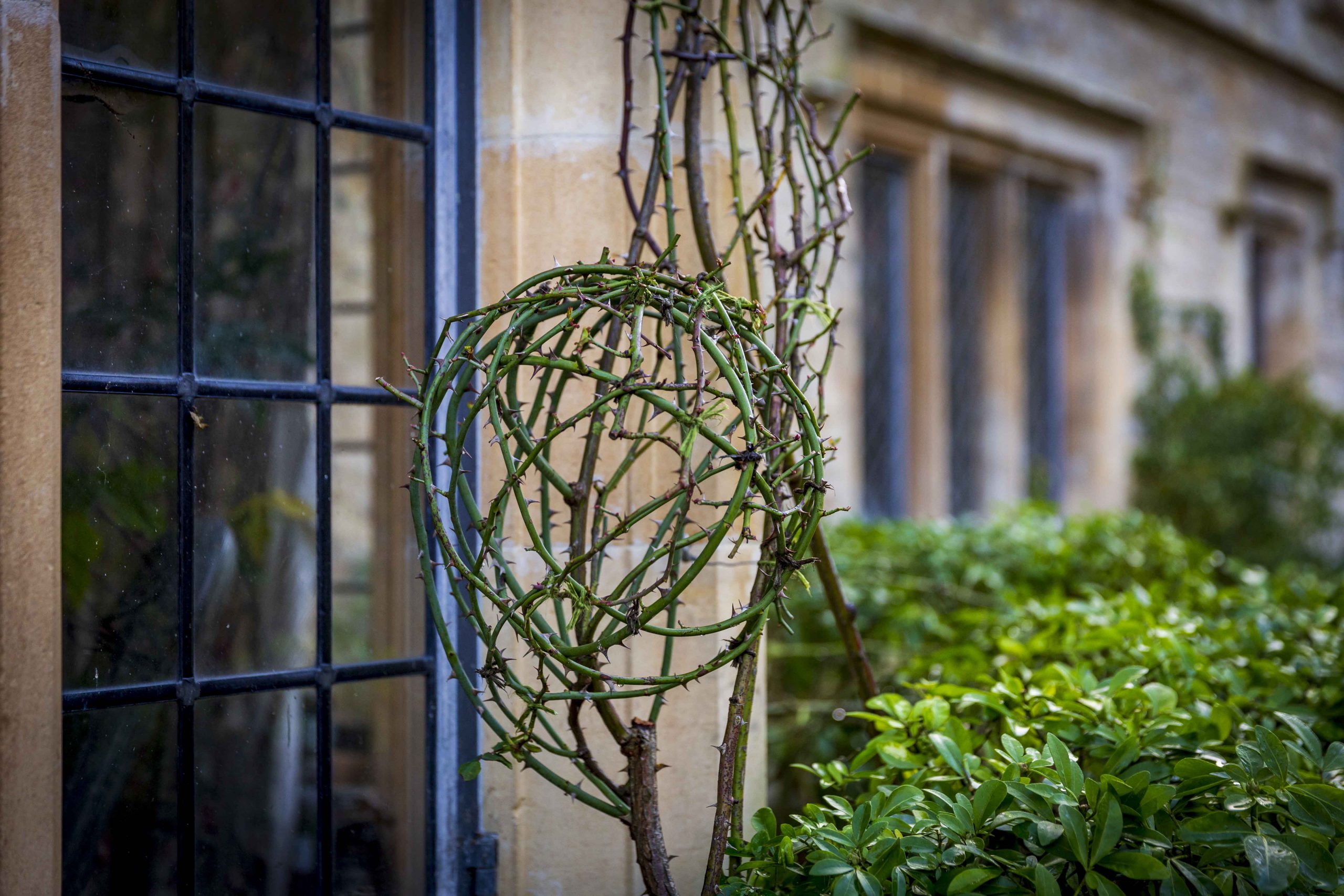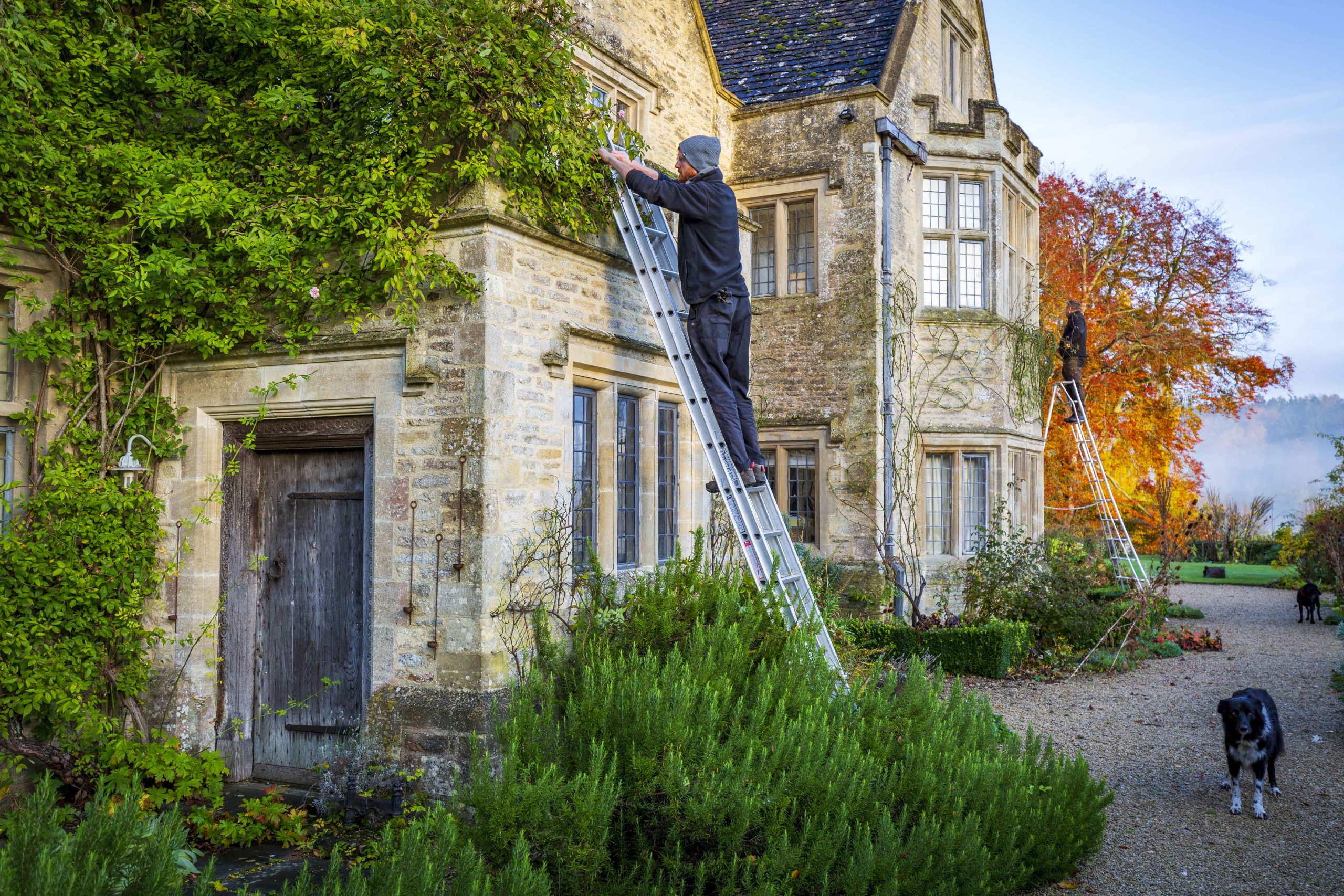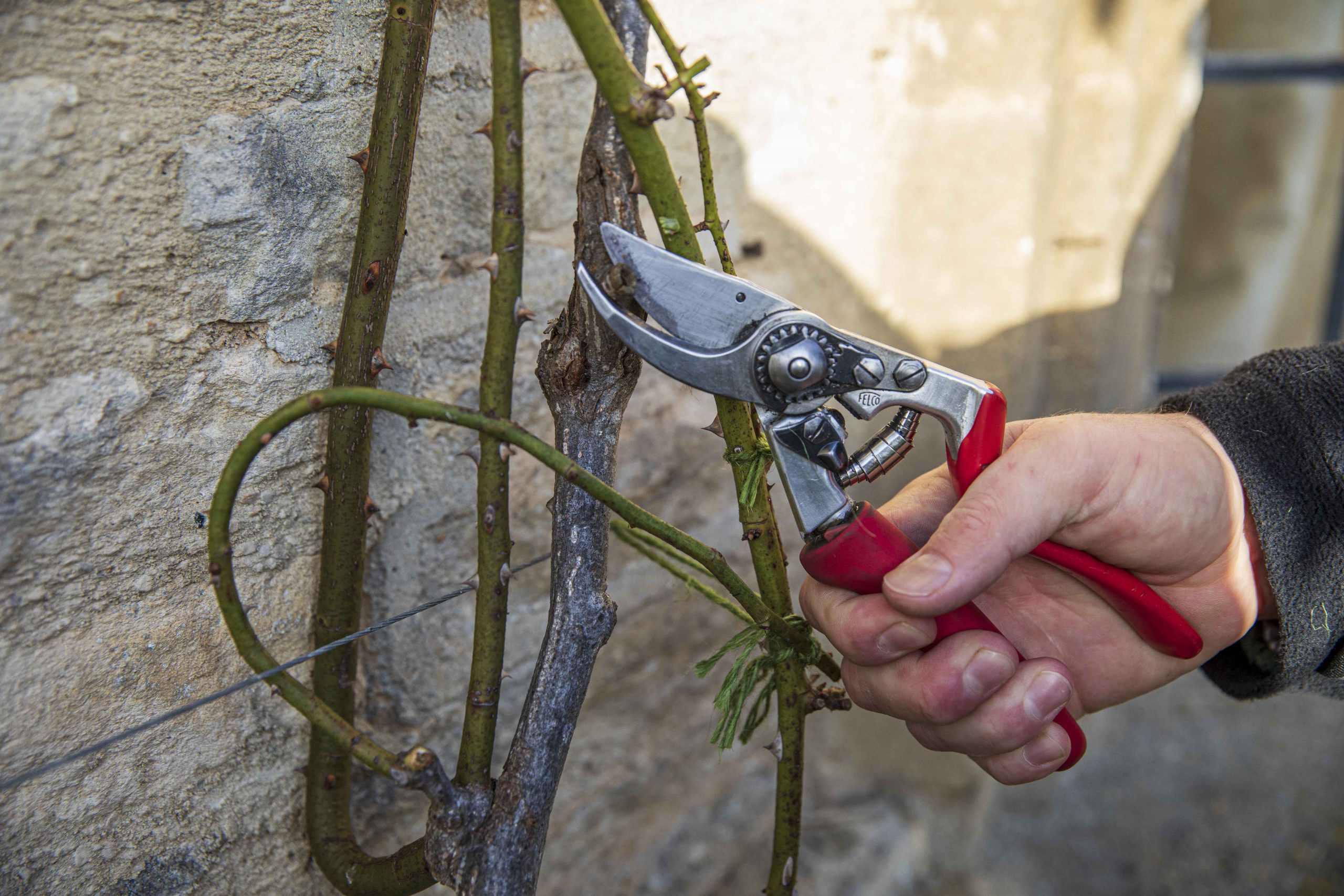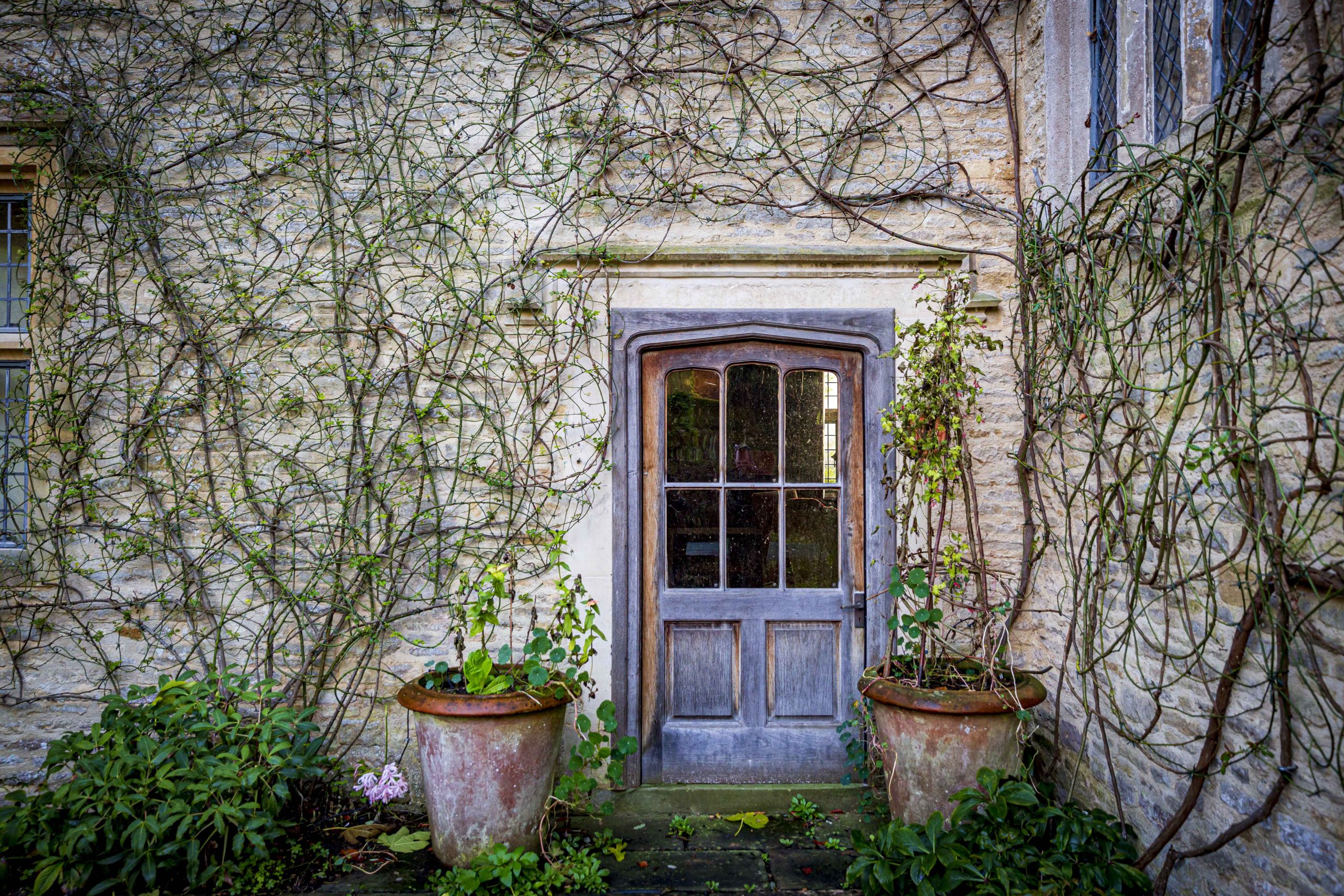What's the ultimate way to train roses?
Val Bourne explores whether Asthall Manor has cracked the ultimate way to train a rose wall.


When I’m driving, like many a gardener, I keep one eye on the road and one on the verge. That was how I discovered Asthall Manor, just west of Burford in Oxfordshire. A substantial stone arch, festooned with roses, had to be examined on foot because I couldn’t quite believe my eyes. Gertrude Jekyll’s favourite blush-white rose, The Garland, was a mass of flower, but without its usual lanky stems and wayward habit.

Synchronicity is a wonderful thing – there was an NGS opening on the following Sunday. The fickle British weather turned and it rained all day, so only a handful of stalwarts turned up, which gave me the opportunity to talk to the then head gardener, Mark Edwards. Asthall’s owner, Rosanna Pearson, had commissioned Julian and Isabel Bannerman to add some magic to the austere country house once owned by the Mitford family and Mr Edwards was the man charged with turning the Bannermans’ romantic 1998 design into reality.

Roses are a key ingredient, especially on the walls, because Miss Pearson wanted the garden to peak in summer to coincide with her ‘On Form’ sculpture exhibition. Hardy geraniums, foxgloves, verbascums, angelica and sweet williams spill over the paths, adding to the Sleeping Beauty feel. There is also a box parterre set on a slope, like something out of Alice’s Adventures in Wonderland, solid waves of yew and flower meadows that sweep down to the gurgling River Windrush below.
Faced with newly planted roses, a foot or so high, and lots of straight wires, Mr Edwards began to train the roses horizontally. However, the rigidity seemed out of kilter with the rest of the imaginative design, so, in the following year, he began looping the rose stems round instead.

Bending rose stems horizontally slows down the sap and produces more flower buds on tighter growth, but forming loops and circles slows the sap down even more and makes the growth much tighter to the wall. As a result, there is far more flower held on shorter stems.
Today, The Garland, underneath its summer skirt, is astonishing: a highly trained wall tapestry consisting of hundreds of over-lapping circles. Yet it didn’t end there. Mr Edwards trained his successor, Jenny Barnes, who added her own stamp and began to create spheres of stems, roughly the size of footballs. Miss Barnes posted pictures on social media and many a young head gardener began to follow the Asthall system.

One of her disciples was rose lover Owen Vaughan, Asthall’s latest head gardener, who used to work at Highgrove. ‘My love of roses began there,’ he says, ‘because I helped prune the rose arbours in the kitchen garden. Since then, I’ve inherited wonderful roses in all my gardens.’
Exquisite houses, the beauty of Nature, and how to get the most from your life, straight to your inbox.

Mr Vaughan began to use the Asthall pruning system in his previous post in a private Gloucestershire garden. He arrived at Asthall in July 2019 and now bears the scars – manipulating rose stems and tying them in cannot be done when wearing gloves. ‘Rubber secretary’s thimbles on the index fingers help, I’ve found,’ says Mr Vaughan, as he hops back up the ladder.
